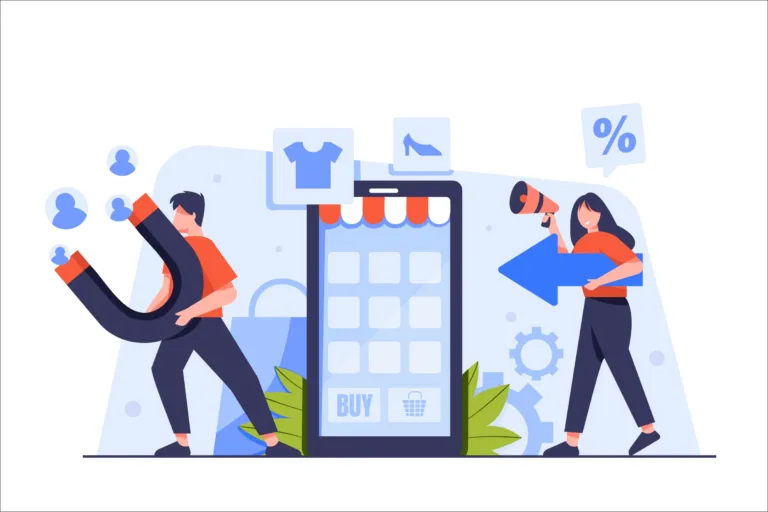Do you run online advertisements for your business? Chances are, you are wasting your marketing budget if you view each channel in isolation. In my 10+ years in digital marketing, I have observed a common reason why businesses waste their advertisement budgets: optimizing for the wrong metrics.
The Flaws in Over-Optimizing for ROAS
A popular metric for measuring advertising success is ROAS (Return on Ad Spend). However, ROAS can be misleading as it doesn’t provide the insights a business needs to grow. When you focus solely on ROAS, many ads get credit for sales that would have occurred anyway. Paid campaigns can deliver high ROAS without significantly increasing sales volume. For a business to grow, you need to aim for incremental sales and optimize the P&L.
Focusing solely on improving ROAS can lead your e-commerce marketer to favor cheaper digital ad types or keywords. The cheaper the ads, the higher your ROAS. Your e-commerce marketer may target shoppers who would buy from your brand regardless to easily boost ROAS, but this doesn’t drive real growth. If this sounds familiar, you are not alone. Most e-commerce marketers prioritize acquiring traffic cheaply to deliver ROAS cost-effectively.
What’s wrong with this approach? This question may come to mind. Most inexpensive traffic comes from those already familiar with your brand and likely to buy from you anyway. You are possibly wasting your advertising budget by targeting them and over-optimizing ROAS.
How ‘Conquesting’ Drives True Growth
Incremental sales are not cheap. Consider investing in ad formats that build brand awareness, increase favorability, and nurture shoppers through the conversion funnel to consider your product. Many of these shoppers are not particularly loyal to your brand, but this is your chance to engage them and convert their clicks into sales that would not have been generated otherwise. Is this strategy expensive? On a CPC basis, yes, but targeting new-to-brand shoppers results in incremental sales.
We will call this approach the ‘conquesting’ strategy. It targets value-seeking shoppers who aren’t loyal to your brand with well-timed and well-paced offers. Your ad should highlight value, and your website’s purchase path should be more convenient than your competitors’ for this strategy to be effective. “The best defense is a good offense” applies here literally. Unfortunately, in my experience, many businesses prioritize ROAS and end up skimming their existing customer base.
Implementing the ‘conquesting’ strategy requires skillful execution and an omnichannel approach. Creating incremental sales is not easy. Why? Think about where a new customer might come from. New-to-brand customers often come from frequent or heavy buyers in your product category. They are driven by value and are willing to try new products. The challenge is that these heavy category buyers are unlikely to become loyal to your brand, according to Jenni Romaniuk, a research professor at the Ehrenberg-Bass Institute for Marketing Science.
Understanding the Heavy Buyer Fallacy
Remember, heavy category buyers often purchase other brands more than yours. Therefore, always communicate your value and stay top-of-mind for them. There are exceptions; a small percentage of heavy buyers are fanatically loyal to their brand of choice. However, targeting and remarketing these heavy buyers is dangerously simplistic. Professor Byron Sharp, Director of the Ehrenberg-Bass Institute, calls this the heavy buyer fallacy. For customers who already buy your brand frequently, it is hard to nudge them to buy even more. Nonetheless, they are an important part of your marketing mix, and you should keep them engaged. Understandably, ROAS is super high for them.
While targeting new heavy category buyers, also target medium and light category buyers. Research suggests that most incremental sales come from one-time buyers, with only a small number making repeat purchases. Calculate the incrementality score of your channels, then focus on reach over frequency and penetration over buy-rate.
The Incrementality Score and Its Importance
If you optimize your media solely based on ROAS, you will end up spending heavily on tactics that yield more ad-touched revenue per unit of ad spend. Understanding incrementality is a paradigm shift. To calculate the incrementality score of your channels, download the conversion path data from your marketing analytics platform, like Google Analytics 4. The incrementality score is calculated by multiplying the density factor by the positional factor. Incremental sales hinge on touching more shoppers at multiple touchpoints.
The density factor is calculated as the percentage of occurrences of a specific channel touch compared to the total touchpoints. The Positional Factor, a modification of last-click attribution, assigns 0 points to the first touchpoint, 1 to the last touchpoint, and 0.5 to all mid-touchpoints in a conversion path. Calculate these in a spreadsheet for each conversion path, then sum them to get the overall incremental score. The incremental score is highest when touchpoints are more mid- and last in a conversion funnel. It is a comparative metric among channels; a higher incremental score means more incremental sales for the business from that channel.
How to Use Campaign Flighting to Maximize Revenue
The incremental score of non-paid channels also depends on the time your brand has been in the market (product life stage). For newer brands, you should rely on paid media to gain initial traction. Over time, as non-paid channels establish themselves as incremental revenue drivers, you can decide on the length and timing of paid campaigns, a strategy known as campaign flighting.
Flight marketing can effectively grow your incremental revenue and profitability, especially if your cost per acquisition through paid media is high. Flight marketing involves running ads for a specific duration and then pausing them for predetermined periods of inactivity. Create a flighting media calendar and run ads for products that are seasonal or have higher sales at certain times of the day or week. By using this strategy, you can save on advertising expenses during inactivity periods while still generating sales from non-paid channels due to the impact of previous paid promotions.
Your e-commerce marketer should have the skill to identify when sales start to decline and take action to restart the paid campaign. He needs to understand your brand and category dynamics well. Campaign flight duration depends on the product type. Shorter flights are ideal for products with expandable consumption or purchasing patterns. For example, running a percentage-off sale for yogurt might increase incremental sales, as people can consume yogurt multiple times a day. However, the same isn’t true for products like soap; customers won’t wash their hands more frequently just because of a sale. Expandable purchasing also affects sales; customers might buy large quantities of soap but not yogurt due to its shorter shelf life. This is why you see EDLP (Every Day Low Price) strategies and promotions in consumable and perishable product stores; they aim to boost incremental sales. Your brand must be strong enough to influence category dynamics if you want to succeed in generating incremental sales with high-percentage discounts.
Conclusion
Optimizing for the right metrics is crucial for sustainable growth in digital advertising. While ROAS is a popular measure, it often leads to misleading strategies that do not drive true business growth. By focusing on incremental sales and employing strategies like conquesting and campaign flighting, businesses can target new customers and build brand traction effectively. This approach requires a nuanced understanding of customer behavior and a willingness to invest in more complex, albeit more rewarding, advertising tactics. Shifting from a ROAS-focused approach to an incrementality-focused strategy can lead to higher profitability and long-term success in the competitive digital marketplace.
Arijit, a seasoned marketing professional with over a decade of experience, is your go-to expert for managing brands and marketing communications online. With a passion for developing strategic and integrated brand strategies, Arijit excels at creating high-converting online marketing plans that drive growth and achieve business goals.





